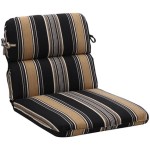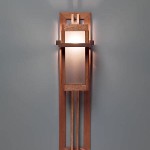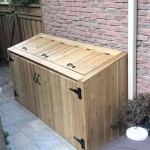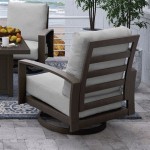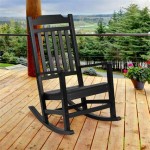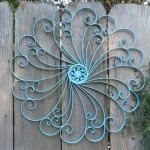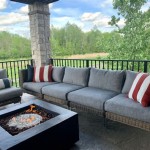Types of Outdoor Furniture Material
Selecting the right material for outdoor furniture is crucial for both aesthetics and longevity. Exposure to the elements, including sun, rain, and fluctuating temperatures, necessitates careful consideration of the material's durability, maintenance requirements, and overall suitability for the intended environment. This article explores various materials commonly used in outdoor furniture construction, outlining their respective characteristics, advantages, and disadvantages.
Wood: A Classic and Versatile Choice
Wood has been a long-standing favorite for outdoor furniture, prized for its natural beauty and inherent strength. The specific type of wood used significantly impacts its resistance to decay, insects, and moisture. Hardwoods generally outperform softwoods in outdoor applications due to their denser composition and higher oil content. Teak, cedar, and redwood are among the most popular hardwood choices, each offering unique benefits.
Teak is highly regarded for its exceptional durability and natural resistance to rot and insects. Its dense grain and high oil content make it naturally water-resistant, minimizing the need for frequent treatments. Over time, untreated teak will develop a silver-gray patina, which is aesthetically pleasing to some. While teak offers superior performance, it often comes at a higher price point compared to other wood options.
Cedar is another excellent choice for outdoor furniture, known for its aromatic oils that deter insects and resist decay. It is lighter in weight compared to teak, making it easier to move and rearrange furniture pieces. Cedar also possesses a beautiful reddish-brown hue that lends a warm and inviting aesthetic. Although naturally resistant to moisture, cedar may require periodic sealing to maintain its color and prevent weathering.
Redwood, similar to cedar, contains natural oils that contribute to its resistance to decay and insect infestation. Its rich reddish-brown color adds a touch of elegance to outdoor settings. Redwood is relatively lightweight and easy to work with, making it a popular choice for various furniture styles. However, redwood is generally softer than teak or cedar and may be more susceptible to scratches and dents.
Wood furniture requires regular maintenance to preserve its appearance and structural integrity. This typically involves cleaning, sealing, and occasionally staining or painting. Applying a sealant or oil helps to protect the wood from moisture damage and prevent cracking or warping. Proper maintenance can significantly extend the lifespan of wood furniture, ensuring years of enjoyment.
Metal: Strength and Style
Metal offers a combination of strength, durability, and design versatility, making it a popular material for outdoor furniture. Aluminum, wrought iron, and steel are among the most common metal options, each with distinct characteristics and advantages.
Aluminum is a lightweight and rust-resistant metal, making it an excellent choice for outdoor furniture, especially in coastal environments where salt air can accelerate corrosion. Powder-coated aluminum provides an additional layer of protection against the elements and allows for a wide range of color options. Aluminum furniture is relatively easy to maintain, requiring only occasional cleaning with soap and water.
Wrought iron is known for its strength and ornate designs, often used to create traditional or Victorian-style outdoor furniture. Its heavy weight provides stability and prevents it from being easily blown over in windy conditions. However, wrought iron is susceptible to rust and requires regular maintenance to prevent corrosion. This includes applying a protective coating or paint to seal the metal and prevent moisture from penetrating.
Steel offers a combination of strength and affordability, making it a practical choice for outdoor furniture. Like wrought iron, steel is prone to rust and requires protective coatings to prevent corrosion. Powder coating is a common treatment for steel furniture, providing a durable and weather-resistant finish. Stainless steel is a more expensive option that offers superior corrosion resistance, making it well-suited for harsh outdoor environments.
Metal furniture can become hot in direct sunlight, especially darker colors. Consider using cushions or umbrellas to provide shade and prevent discomfort. Regular cleaning and maintenance are essential to preserve the appearance and integrity of metal furniture, ensuring its longevity.
Resin and Plastic: Affordable and Low-Maintenance Alternatives
Resin and plastic materials offer affordable and low-maintenance alternatives to traditional wood and metal furniture. These materials are typically resistant to weather, insects, and rot, making them well-suited for outdoor use. High-density polyethylene (HDPE) and polypropylene are among the most common types of resin and plastic used in outdoor furniture construction.
HDPE is a durable and weather-resistant plastic that is commonly used to create outdoor furniture that mimics the look of wood. It is resistant to moisture, insects, and rot, and it requires minimal maintenance. HDPE furniture is often made from recycled materials, making it an environmentally friendly choice. It is also available in a wide range of colors and styles.
Polypropylene is another popular plastic material for outdoor furniture. It is lightweight, durable, and resistant to fading and cracking. Polypropylene furniture is often used for chairs, tables, and other outdoor accessories. It is also easy to clean and maintain, requiring only occasional wiping with soap and water. While generally durable, polypropylene may be less resistant to extreme temperatures compared to HDPE.
Resin wicker, also known as all-weather wicker, is a popular option for outdoor seating. It is made from synthetic fibers woven around a frame, typically aluminum. Resin wicker is resistant to weather, fading, and mildew, making it a durable and low-maintenance choice. It is also available in a variety of colors and styles to complement different outdoor aesthetics.
While resin and plastic furniture offer numerous advantages, it is essential to choose high-quality materials to ensure durability and longevity. Lower-quality plastics may be more susceptible to cracking or fading over time. Proper cleaning and storage can help to extend the lifespan of resin and plastic furniture.
Other Material Considerations
Beyond the core materials of wood, metal, and resin, other materials play a significant role in the overall construction and performance of outdoor furniture. These include fabrics, cushions, and hardware. Selecting durable and weather-resistant materials for these components is crucial for ensuring the longevity and comfort of the furniture.
Outdoor fabrics should be resistant to fading, mildew, and water damage. Solution-dyed acrylic fabrics, such as Sunbrella, are highly regarded for their durability and colorfastness. These fabrics are treated to resist fading from UV exposure and are also water-repellent. Other suitable options include polyester and olefin fabrics, which offer good resistance to weather and wear.
Cushions should be made with quick-drying foam and covered in outdoor-grade fabrics. Using mildew-resistant foam helps to prevent the growth of mold and bacteria. Consider using cushion covers that are removable and washable to facilitate easy cleaning and maintenance.
Hardware, such as screws, bolts, and hinges, should be made from stainless steel or other corrosion-resistant materials. This will prevent rust and ensure the structural integrity of the furniture. Regularly inspect and tighten any loose hardware to maintain the stability of the furniture.
The selection of outdoor furniture material should be based on a careful assessment of factors such as climate, budget, desired aesthetic, and maintenance preferences. Each material offers unique advantages and disadvantages, and the optimal choice will depend on the specific needs and priorities of the user. By carefully considering the characteristics of each material, individuals can select outdoor furniture that provides years of enjoyment and enhances the beauty of their outdoor living spaces.

Outdoor Cushion Patio Furniture Material Guide Phifer

Track Your Order

How To Choose The Best Patio Furniture For Your Home

Best Fabric For Outdoor Furniture And Cushions

Outdoor Furniture Buying Guide 2024 Experts Share Everything You Need To Know

Best Weather Resistant Outdoor Furniture For Devries

The 8 Best Durable Outdoor Furniture Materials Castlery Us

Best Material For Outdoor Furniture Tradegully

Best Patio Furniture 2025 Forbes Vetted

Complete Guide To Outdoor Living Furniture B2c

